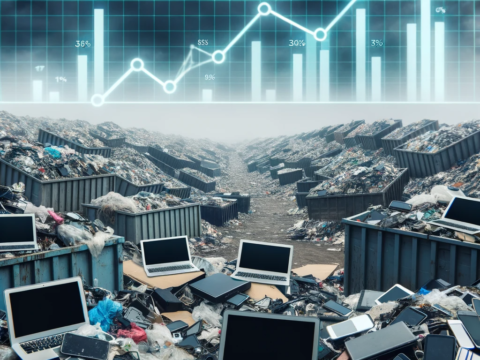- Are you aware of the hidden dangers lurking in your electronic devices?
- In this article, we will explore the growing problem of e-waste and its impact on the environment and human health. By understanding the global statistics and trends surrounding e-waste, you will gain valuable insights into the magnitude of this issue and the urgent need for sustainable solutions.
Table of Contents
The Growing Problem of E-Waste: A Looming Crisis
Did you know that electronic waste, or e-waste, is one of the fastest-growing waste streams globally? With the rapid advancement of technology and the increasing demand for electronic devices, the disposal of outdated or broken gadgets has become a pressing concern. In this section, we will delve into the staggering statistics that highlight the magnitude of the e-waste crisis.
According to the United Nations Global E-waste Monitor 2020, a record 53.6 million metric tons of e-waste was generated worldwide in 2019. This is equivalent to the weight of 350 cruise ships! Shockingly, only 17.4% of this e-waste was officially documented as collected and recycled. The remaining 82.6% either ended up in landfills or were improperly disposed of, posing significant environmental and health risks.
The Growing Problem of E-Waste: The Environmental Impact
When electronic devices are not disposed of properly, they release hazardous substances into the environment. These toxic materials, such as lead, mercury, and cadmium, can contaminate soil, water, and air, leading to severe ecological damage. Let’s explore the environmental impact of e-waste in more detail.
- Soil Contamination: When e-waste is dumped in landfills, the toxic chemicals can leach into the soil, making it unsuitable for agriculture and posing a threat to plant and animal life.
- Water Pollution: Improper disposal of e-waste can contaminate water sources, endangering aquatic ecosystems and potentially affecting human populations that rely on these water supplies.
- Air Pollution: Burning e-waste releases harmful gases and particulate matter into the atmosphere, contributing to air pollution and exacerbating respiratory problems.
The Growing Problem of E-Waste: The Human Health Risks
Not only does e-waste harm the environment, but it also poses significant risks to human health. The toxic substances found in electronic devices can have detrimental effects on individuals exposed to them, especially those involved in informal recycling operations. Let’s examine the human health risks associated with e-waste.
Workers involved in dismantling and recycling e-waste are often exposed to hazardous chemicals without proper protective measures. This can lead to various health issues, including respiratory problems, skin disorders, and even cancer. Additionally, the improper handling of e-waste can result in the release of toxic fumes, endangering nearby communities.
The Need for Sustainable Solutions
Given the alarming statistics and the detrimental impact of e-waste, it is crucial to adopt sustainable solutions to address this growing problem. Governments, manufacturers, and consumers all have a role to play in reducing e-waste and promoting responsible disposal practices.
- Legislation and Regulation: Governments should implement and enforce strict regulations regarding the disposal and recycling of electronic devices. This includes promoting extended producer responsibility, where manufacturers are held accountable for the entire lifecycle of their products.
- Recycling and Proper Disposal: Consumers should be encouraged to recycle their electronic devices through designated collection points or authorized recycling facilities. Additionally, raising awareness about the importance of proper e-waste disposal is crucial in changing consumer behavior.
- Design for Sustainability: Manufacturers should prioritize designing products that are easier to repair, upgrade, and recycle. By incorporating sustainable practices into the design phase, the lifespan of electronic devices can be extended, reducing the need for frequent replacements.
Conclusion
The issue of e-waste is a global problem that demands immediate attention. The alarming statistics and trends surrounding e-waste highlight the urgent need for sustainable solutions. By understanding the environmental impact and human health risks associated with e-waste, we can work towards a future where electronic devices are responsibly managed, minimizing their negative effects on our planet and well-being.


